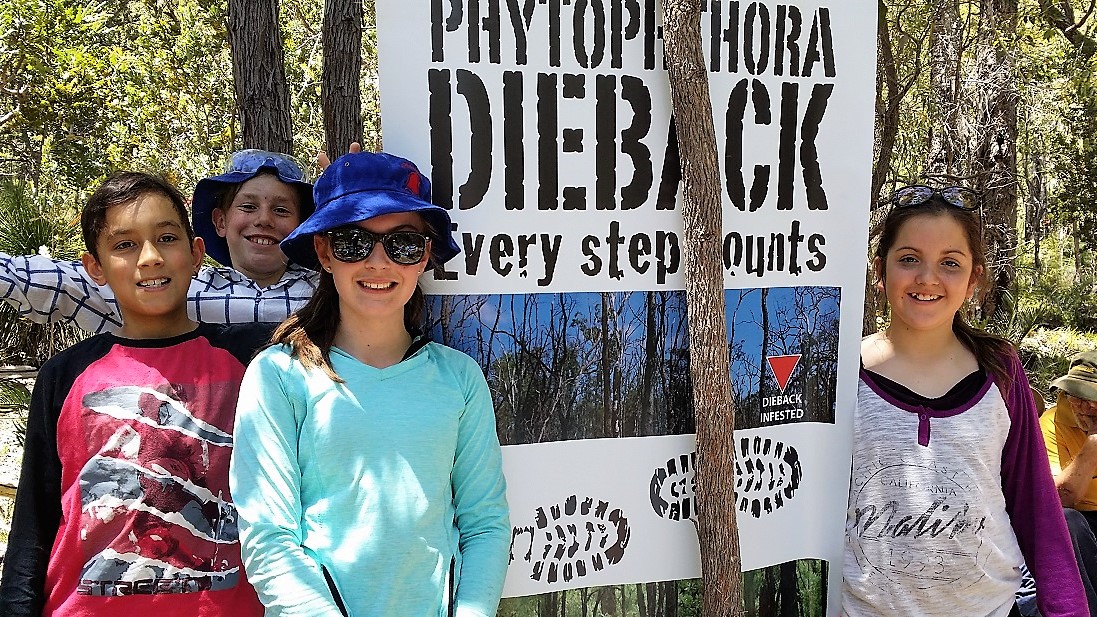Primary School Education Kit

Discovering Dieback Education Program – an essential resource for teachers
The Discovering Dieback Education Program is an award-winning education program developed by Armadale Primary School and the Dieback Working Group to engage and educate school students about one of the biggest threats to Australia’s biodiversity – Phytophthora Dieback. Through the program, students learn about a range of topics that prepare them for understanding the plant disease Phytophthora Dieback, and actively help protect a patch of bushland from the disease by applying treatment. Phytophthora Dieback is a complex issue for students to learn about but through the program, they not only understand it but come to care about the impact it is having on their bushland and take action to mitigate that impact.
The DWG ran the program in the South West of WA from 2006 – 2018, with more than 25 different primary and high schools, reaching more than 2275 students across an area spanning from Badgingarra, north of Perth, to Bremer Bay in WA’s south. Student, teacher and parent volunteers have helped protect more than 100ha of bushland from the threat of Phytophthora Dieback through their phosphite treatment activities.
The program all started with a group of innovative teachers at Armadale Primary School in 2006 who developed the program with the Dieback Working Group and funds from the Australian Government’s Natural Heritage Trust. Their students went on to produce a performance piece about the issue called ‘Stop the Rot’ which was presented at the J-Rock competition in Perth in 2006 – and won! The performance (https://youtu.be/ADoYXtTm1LQ) has inspired others all around the world and shows the ability for these students to understand such a complex disease, take on the issue and actively share its messages. We’re proud of this program and every single student that has participated in it, but we’re keen to see many more students educated through the program across Australia.
Current Program
The Discovering Dieback program is currently being redeveloped, with hopes to start delivering again in 2024 – 2025.
Email [email protected] for further information on updates to the school program.


